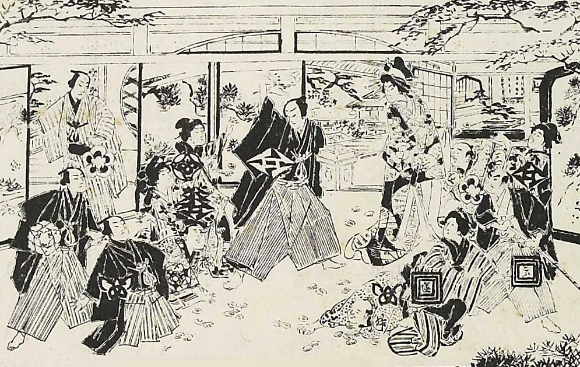Suehiro-za (Nagoya) on:
[Wikipedia]
[Google]
[Amazon]
 The Suehiro-za (жң«еәғеә§) was a ''
The Suehiro-za (жң«еәғеә§) was a ''
еҪ№еүІз•Әйҷ„пјҸеҗҚеҸӨеұӢжң«еәғеә§
1883 establishments in Japan Buildings and structures in Japan destroyed during World War II Former kabuki theatres History of Nagoya Sakae, Nagoya Theatres in Nagoya {{theat-stub
 The Suehiro-za (жң«еәғеә§) was a ''
The Suehiro-za (жң«еәғеә§) was a ''kabuki
is a classical form of Theatre of Japan, Japanese theatre, mixing dramatic performance with Japanese traditional dance, traditional dance. Kabuki theatre is known for its heavily stylised performances, its glamorous, highly decorated costumes ...
'' theatre in Nagoya
is the largest city in the ChЕ«bu region of Japan. It is the list of cities in Japan, fourth-most populous city in Japan, with a population of 2.3million in 2020, and the principal city of the ChЕ«kyЕҚ metropolitan area, which is the List of ...
, central Japan. It was located in Suehiro-chЕҚ, Naka Ward.
History
In Nagoya of theMeiji era
The was an Japanese era name, era of History of Japan, Japanese history that extended from October 23, 1868, to July 30, 1912. The Meiji era was the first half of the Empire of Japan, when the Japanese people moved from being an isolated feu ...
at that time a number of theatres existed, such as the Chitose-za (еҚғжӯіеә§) in Minamikuwana-machi (еҚ—жЎ‘еҗҚз”ә), Shinmori-za (ж–°е®Ҳеә§) in Motoshige-chЕҚ (жң¬йҮҚз”ә), Onu-za (йҹізҫҪеә§) in Minamifushimi-chЕҚ (еҚ—дјҸиҰӢз”ә), Hoso-za (е®қз”ҹеә§) in ЕҢsu
is an area located in the Naka-ku, Nagoya, Naka ward of Nagoya, central Japan.
ЕҢsu is a historic area which has many small shops offering everything from Japanese traditional food to handicrafts. A large department store is OSU301. It is pop ...
, and Misono-za. The theatre was founded under a different name originally in January 1883.
Among the many noted actors were Nakamura DenkurЕҚ VI (1859-1923), who was born in Suehiro-chЕҚ and became of a member of the children actors troupe at the Suehiro-za. Ichikawa ChЕ«sha VII (1860-1936) and Ichikawa DanzЕҚ VII (1836-1911) appeared together in May 1909, as well as Nakamura TokizЕҚ III (1895-1959) appeared here in May 1917.
The building was bought by Shochiku
is a Japanese entertainment company. Founded in 1895, it initially managed '' kabuki'' theaters in Kyoto; in 1914, it also acquired ownership of the Kabuki-za theater in Tokyo. In 1920, Shochiku entered the film production industry and establis ...
, a cinema chain which has its roots in ''kabuki'' production, and converted into a movie theatre in 1927. Under its new name Shochiku-za (жқҫз«№еә§) it became one of the leading cinemas in town and was also used for revue
A revue is a type of multi-act popular theatre, theatrical entertainment that combines music, dance, and sketch comedy, sketches. The revue has its roots in 19th century popular entertainment and melodrama but grew into a substantial cultural pre ...
shows. It was destroyed in the bombing of Nagoya during World War II.
References
External links
еҪ№еүІз•Әйҷ„пјҸеҗҚеҸӨеұӢжң«еәғеә§
1883 establishments in Japan Buildings and structures in Japan destroyed during World War II Former kabuki theatres History of Nagoya Sakae, Nagoya Theatres in Nagoya {{theat-stub